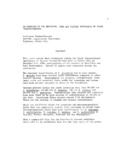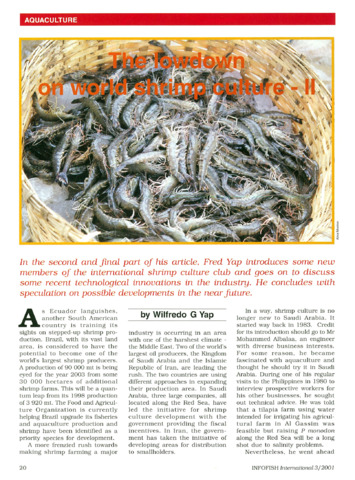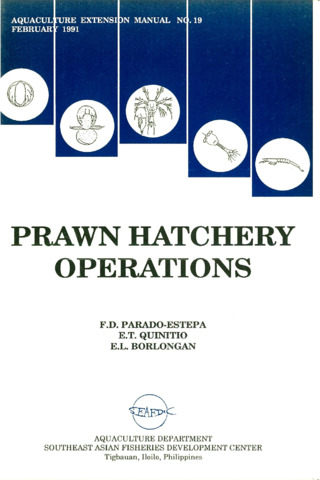| dc.contributor.author | Dy Peñaflorida, Veronica | |
| dc.contributor.author | Golez, Nelson V. | |
| dc.date.accessioned | 2013-04-15T02:02:09Z | |
| dc.date.available | 2013-04-15T02:02:09Z | |
| dc.date.issued | 1996 | |
| dc.identifier.citation | Dy Peñaflorida, V., & Golez, N. V. (1996). Use of seaweed meals from Kappaphycus alvarezii and Gracilaria heteroclada as binders in diets for juvenile shrimp Penaeus monodon. Aquaculture, 143(3–4), 393–401. | en |
| dc.identifier.issn | 0044-8486 | |
| dc.identifier.uri | http://hdl.handle.net/10862/1569 | |
| dc.description.abstract | Two seaweed meals were tested as binders in shrimp diets. In the first study, Kappaphycus alvarezii or Gracilaria heteroclada in dry ground form were added to an isonitrogenous diet at 3, 5, 7 or 10%. The basal diet had 5% corn starch and 5% wheat flour as binders and served as the control diet. A second study used the seaweed meals at 5, 10 or 15% plus 5% wheat flour and a control diet containing 15% wheat flour (no seaweed meal). These two sets of diets were fed to juvenile tiger shrimp, Penaeus monodon, to assess the acceptability of the seaweed meals in terms of shrimp growth and survival. In both studies, diets with 10% G. heteroclada had the highest water stability after 4 h but differences among diets were minimal. In study 1, shrimp fed diets with 3% and 5% K. alvarezii and 10% G. heteroclada had the highest total biomass and those fed the diet containing 5% K. alvarezii the highest specific growth rate (SGR). Shrimp survival was highest with those fed 3% K. alvarezii and decreased as K. alvarezii was increased. Survival was not affected by the level of G. heteroclada in the diet. Diets with 3% and 5% K. alvarezii had the best feed conversion ratio (FCR). With a modified binder composition in study 2, total biomass and SGR of shrimp fed 10% G. heteroclada did not significantly differ from the control, nor from 10% K. alvarezii and 5% G. heteroclada. Diets with 5% and 10% K. alvarezii or G. heteroclada had the best FCR. Survival was highest among shrimp fed 5% G. heteroclada but was not significantly different from those of the control, 10% G. heteroclada and 10% K. alvarezii groups. Thus, as a supplement for wheat flour, up to 5% K. alvarezii or 10% G. heteroclada meal could be used with no adverse effect on growth. The use of seaweed meals as binder in commercial shrimp diets would minimize organic waste from the feed and would mean an additional market for seaweeds. | en |
| dc.language.iso | en | en |
| dc.publisher | Elsevier | en |
| dc.subject | Gracilaria heteroclada | |
| dc.subject | Kappaphycus alvarezii | en |
| dc.subject | Penaeus monodon | en |
| dc.title | Use of seaweed meals from Kappaphycus alvarezii and Gracilaria heteroclada as binders in diets for juvenile shrimp Penaeus monodon | en |
| dc.type | Article | en |
| dc.citation.volume | 143 | |
| dc.citation.issue | 3-4 | |
| dc.citation.spage | 393 | |
| dc.citation.epage | 401 | |
| dc.citation.journalTitle | Aquaculture | en |
| dc.subject.asfa | adhesives | en |
| dc.subject.asfa | diet | en |
| dc.subject.asfa | feed efficiency | en |
| dc.subject.asfa | fishmeal | en |
| dc.subject.asfa | food technology | en |
| dc.subject.asfa | mariculture | en |
| dc.subject.asfa | seaweed products | en |
| dc.subject.asfa | shrimp culture | en |
| dc.identifier.doi | 10.1016/0044-8486(96)01282-3 | |
| dc.subject.scientificName | Penaeus monodon | en |



